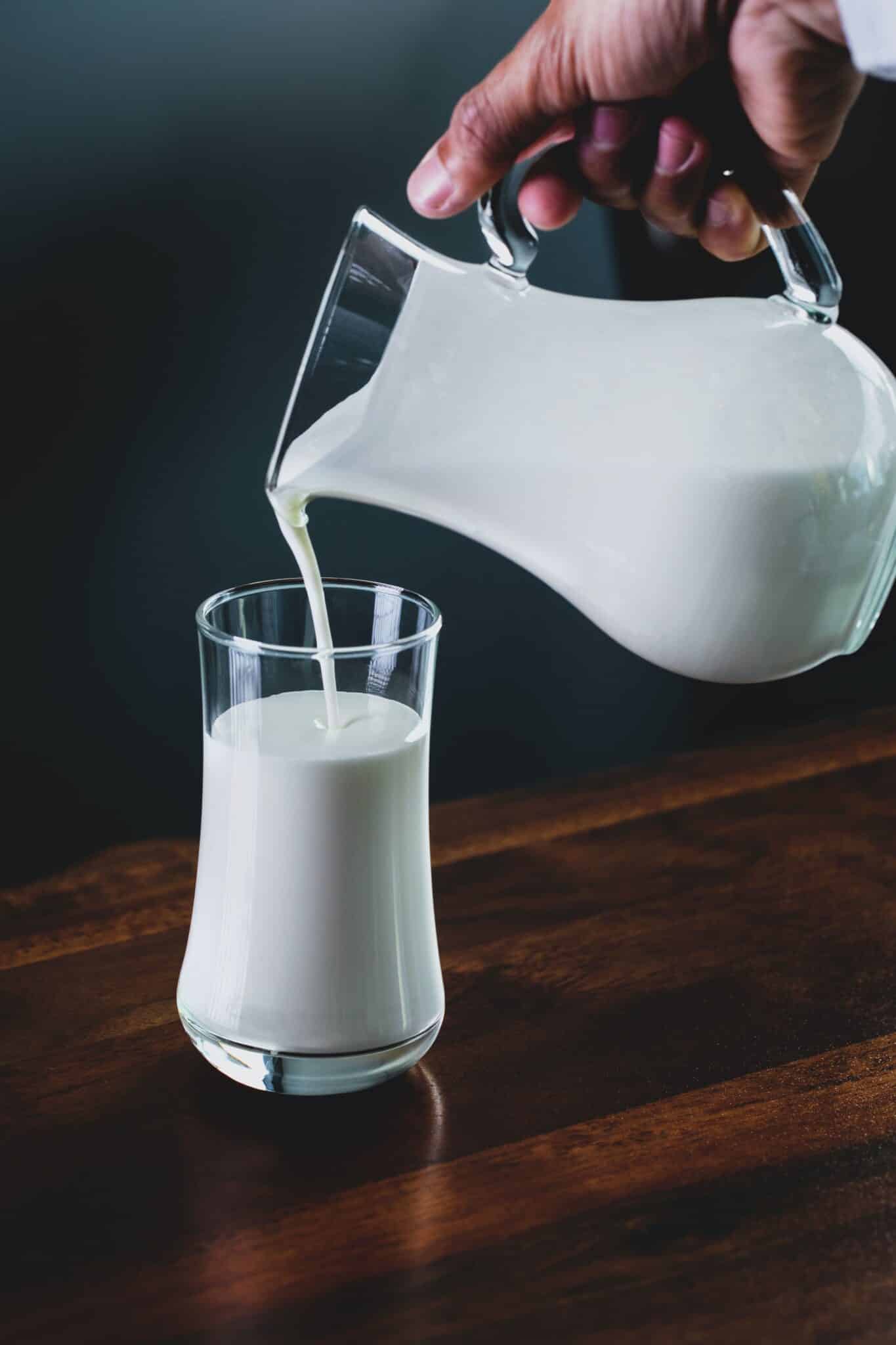Is Keto Dairy Free?
Ketogenic or Keto diet is a low-carb, high-fat diet that encourages the body to burn fat for energy instead of glucose. People following this diet generally avoid foods with high carb content and consume more fats. While some people recommend avoiding dairy on the keto diet due to its carb and sugar content, it is not mandatory.
Here are four points discussing the possibility of being dairy-free on the Keto diet:
- Some people indulge in full-fat cheeses, cream, and butter while on a ketogenic diet as they are low in carbs.
- Avoiding dairy completely can be challenging for people who love cheese or incorporate them in their meals regularly.
- Vegetarians following a ketogenic diet might find dairy an essential protein source used to meet their daily protein requirements.
- Dairy products such as plain Greek yogurt or cottage cheese can fulfill calcium needs without interrupting ketosis levels.
It is important to note that keto mainly focuses on reducing carb intake, so unless you are lactose intolerant or allergic to milk proteins, consuming dairy may work for you.
Exploring further might reveal that there may be different ways of approaching keto diets without dairy. For instance, modifying recipes by swapping regular milk with almond milk and butter with coconut oil could work.
One popular way for many people was trying out different combinations until they found ones that worked for them. A friend trying a similar approach said cutting back gradually helped her reduce cravings while maintaining ketosis levels.
Understanding the Keto Diet is like trying to explain why we find bacon so irresistible – it’s complicated but oh so tasty.
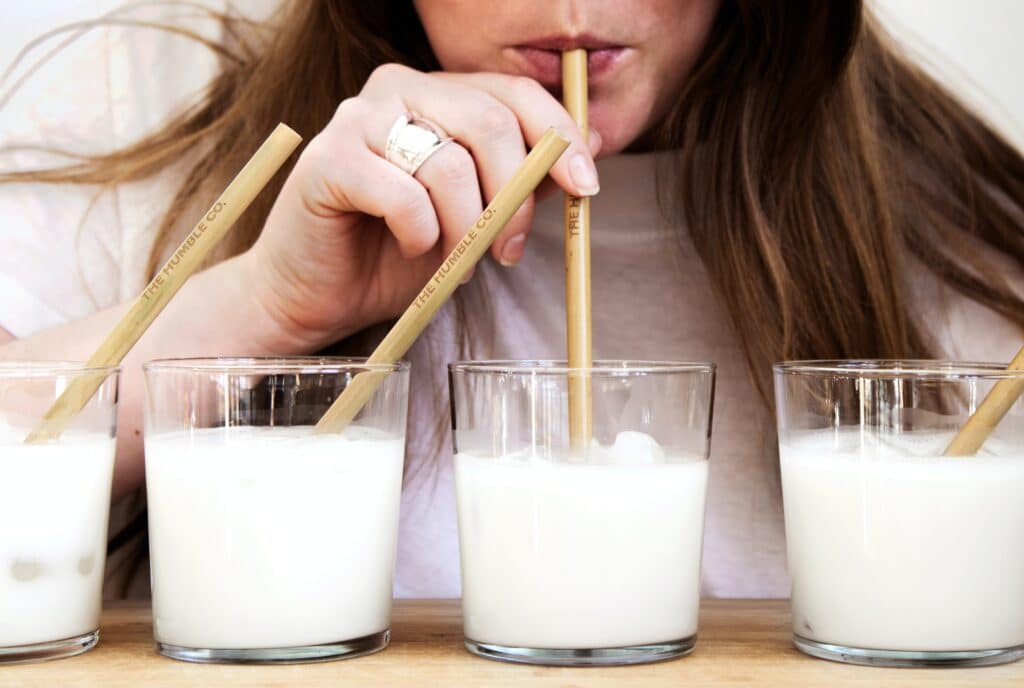
Understanding the Keto Diet
The Keto Diet is a low-carb, high-fat diet that helps the body enter a state of ketosis, where it burns fat for energy instead of carbohydrates. This diet has gained popularity due to its success in promoting weight loss, improving insulin sensitivity, and reducing inflammation.
Many people wonder whether the Keto Diet is dairy-free. While dairy products like cheese and milk are often consumed on the Keto Diet, it is still possible to follow a dairy-free Keto Diet by substituting dairy products with nut milks, coconut yogurts, and vegan cheese alternatives.
Additionally, it’s important to note that the Keto Diet is not a one-size-fits-all approach and may not be suitable for everyone. It is crucial to consult with a healthcare professional before starting any new diet.
As a true story, a friend of mine struggled with her weight for years despite trying countless diet plans. After several unsuccessful attempts, she decided to try the Keto Diet, which not only helped her lose weight but also improved her overall health and well-being. She has since incorporated it as a lifestyle change and maintains a healthy weight while enjoying delicious, satisfying meals.
Why bother with portion control when you can just cut out an entire food group? Introducing the Keto Diet.
Definition and purpose of the Keto Diet
The Keto Diet is a low-carb, high-fat diet that aims to induce ketosis in the body. This metabolic state forces the body to burn fat for energy instead of carbohydrates, resulting in weight loss. Its purpose is not just limited to weight loss but also helps in controlling blood sugar levels, reducing inflammation and improving brain health.
Moreover, following a Keto Diet involves minimizing carbohydrate intake while consuming higher amounts of healthy fats like oily fish, avocados, nuts and seeds, and minimizing protein consumption.
If you are considering this diet, ensure that you consult a nutritionist or dietician before starting. Make sure that you consume sufficient vegetables and electrolytes while adhering to the necessary macronutrient ratios.
Incorporating the Keto Diet into your lifestyle may be daunting initially but it can potentially bless you with remarkable health benefits. So take the plunge now!
Eating more bacon and avocados than a frat boy on spring break – welcome to the Keto Diet!
Primary foods consumed on the Keto Diet
The Keto Diet primarily involves consuming a low-carb, high-fat diet, which puts the body into a state of ketosis. The approach seeks to promote weight loss and health benefits.
The following table sheds light on the Primary foods consumed on the Keto Diet:
| Food Group | Examples |
|---|---|
| Meats | Beef, chicken, pork, lamb |
| Seafood | Salmon, tuna, shrimp, crab |
| Nuts and Seeds | Almonds, macadamia nuts, chia seeds |
| Low-Carb Veggies | Broccoli, spinach, cauliflower |
| Dairy Products | Cheese, butter |
Consuming sufficient amounts of healthy fats is crucial for achieving optimal results on the Keto Diet. In addition to the listed food groups above, avocados and coconut oil are excellent sources of healthy fats.
A study by Harvard Medical School found that the Keto Diet can significantly improve blood sugar control and reduce cholesterol levels in obese individuals.
Say cheese all you want, but dairy-free diets are the real MVPs of clean eating.
Understanding Dairy-Free Diets
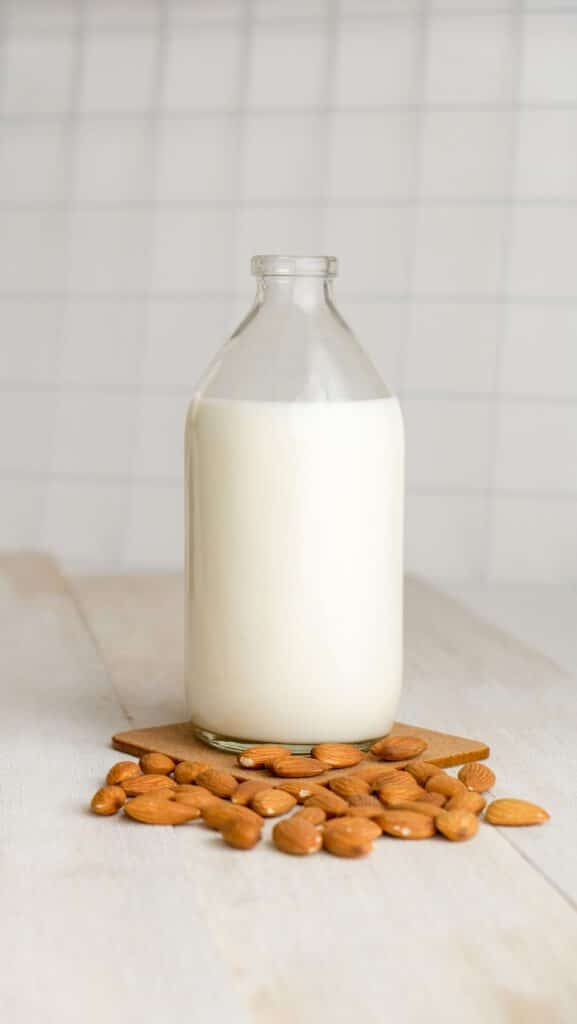
Dairy-Free Diets Simplified
Dairy-free diets have become increasingly popular, as people opt for a plant-based lifestyle, or choose to avoid dairy products for various reasons. Many individuals are allergic or intolerant to lactose, the sugar found in milk. Others are vegan or have ethical concerns about consuming products that come from animals. Plant-based milks such as almond, soy, coconut, and oat milk are popular alternatives to dairy milk. Dairy products include yogurt, cheese, butter, milk powder and cream, all of which can be replaced with plant-based alternatives.
Additionally, a dairy-free diet is not necessarily the same as a lactose-free diet. Lactose is just one component of dairy, so a lactose-free diet may still include dairy products that are low in lactose. However, a dairy-free diet strictly eliminates all dairy, including lactose-free dairy products.
Pro Tip: Reading labels is crucial when following a dairy-free diet. Keep an eye out for hidden milk derivatives such as whey, casein, and lactalbumin in packaged foods.
Going dairy-free is udderly butterly delicious…if you’re not lactose intolerant.
Definition and purpose of a Dairy-Free Diet
A Dairy-Free Diet is a dietary practice where individuals avoid consuming dairy products due to certain allergies, intolerances or personal beliefs. Its purpose is to eliminate lactose from one’s diet, a natural sugar found in dairy that some people cannot digest, leading to symptoms like bloating, diarrhea and flatulence.
People who follow a Dairy-Free Diet consume alternative sources of calcium, vitamins and minerals found in non-dairy items like soy milk, spinach and almonds. Such diets offer several benefits like improved digestion, reduced inflammation and the elimination of skin problems caused by dairy consumption.
Individuals can replace dairy products with healthy alternatives like plant-based milks, soy-based cheeses or nut-based yogurts. These alternatives work as they are rich in vitamins and minerals that offer numerous health benefits that contribute to an overall improved general wellness.
Moreover, adopting a Dairy-Free Diet requires careful planning to ensure adequate nutrition as it can lead to potential deficiencies in certain nutrients commonly found in dairy products. Therefore, individuals following this dietary practice must seek professional help and attention when designing their meal plans for optimal benefit.
If you’re looking for a milk alternative, it’s like a game of ‘Got Milk?’ but with way more options and none of the lactose.
Milks and alternative products used on dairy-free diets
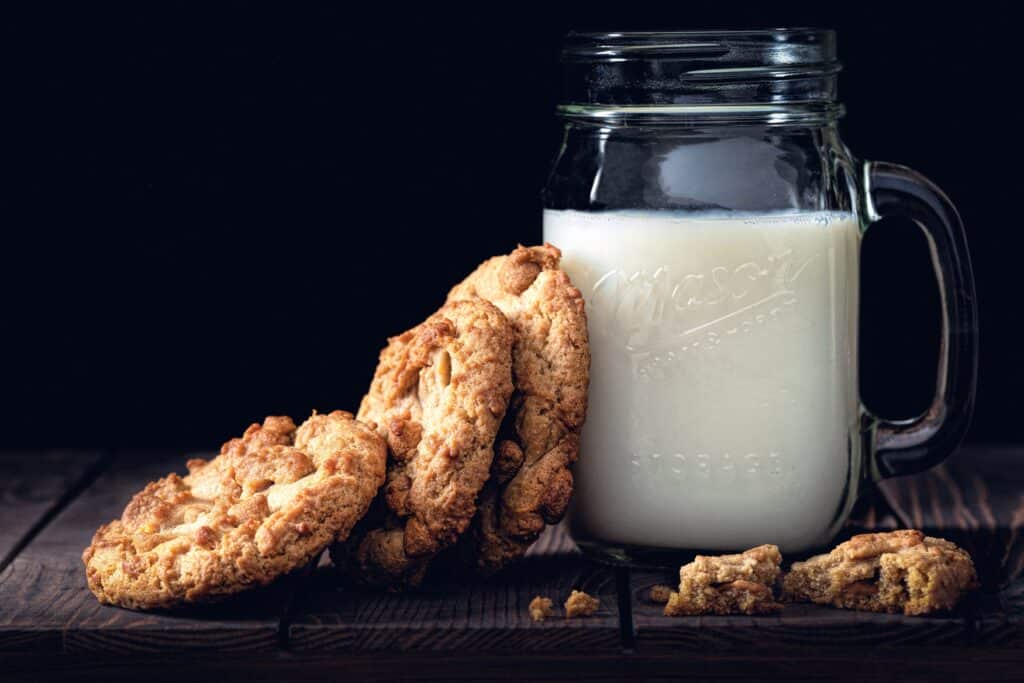
Milk and its substitutes for Dairy-free Eating Regimens
For individuals who follow a dairy-free diet, milk and dairy products are avoided. But there are quite a few plant-based milk and alternate items available today, as the need increases such as:
- Soy milk
- Almond milk
- Rice Milk
- Oat Milk
- Vegan Cheese/Yogurt
Furthermore, some might not prefer plant-based or vegan alternatives due to taste preferences or existing allergies. Still, lactose intolerant people find comfort in these options.
In addition to this, being mindful of dairy-free diets could be the solution to specific digestive problems as well as other health concerns.
Upon considering a dairy-free diet, consumers can recognize that innovative goods including nut cheeses along with various quinoa flours are making their way into the grocery stores’ aisles. Do you want to miss out on all of these newly developed nutritious foods? Take advantage now!
Sorry dairy, looks like you’re not invited to the keto party.
Does the Keto Diet Eliminate Dairy Products?
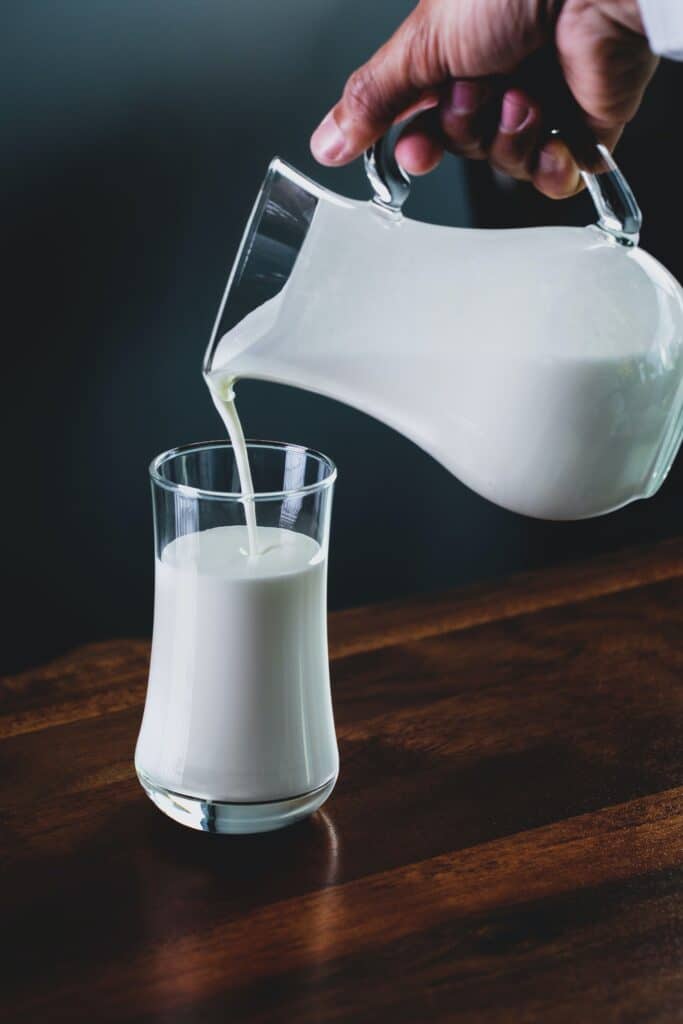
For those on a keto diet, eliminating dairy products may be a smart choice. While dairy can provide a good source of fat and protein, it contains lactose, a sugar that can impact insulin levels and inhibit ketosis. However, the decision to cut out dairy ultimately depends on individual goals and tolerances.
If dairy is cut out, there are plenty of alternatives that can provide the same benefits, such as nuts, avocado, and coconut. These options may even offer additional health benefits. It’s important to keep in mind that while dairy may be a convenient source of nutrients, it’s not necessary for a balanced and successful keto diet.
When considering eliminating dairy, it’s important to be aware of hidden sources as well, such as whey protein and casein. A dairy-free keto diet can still be delicious and fulfilling, and can ultimately lead to improved health outcomes.
An acquaintance of mine found success on a dairy-free keto diet, experiencing improved digestion and weight loss. She replaced dairy with plant-based alternatives and has not looked back since. Of course, as with any dietary changes, it is important to consult with a healthcare professional and make informed choices that work best for each individual.
Is dairy really necessary for the Keto diet or are we just milking it for all it’s worth?
The role of dairy in the Keto Diet
Dairy is a useful component in the Keto Diet as it contains high fat and protein content, which aids in weight loss. In addition, dairy products are rich in vitamin D and calcium.
The following table shows the Type of Dairy, Serving Size and Net Carbs:
| Type of Dairy | Serving size | Net Carbs |
|---|---|---|
| Cheese | 28g-30g (1oz) | 0-4g |
| Yogurt with no added sugar | 170g (6oz) | 5-10g |
| Butter or Ghee | 14g (1 tbsp) | 0g |
| Heavy Cream or Whipped Cream | 30ml (1oz) | 0.5-1g |
It is important to note that some dairy products contain carbohydrates. Therefore, it is essential to read labels carefully while choosing dairy items. One must also be aware of any lactose intolerances and limit consumption accordingly.
To optimize weight loss during the Keto Diet, it is recommended to opt for full-fat versions of dairy products instead of low-fat or skimmed options. Additionally, one should avoid sweetened dairy products like ice cream and flavored yogurts as they tend to have high sugar content.
Incorporating dairy products into the Keto Diet can provide various health benefits, including increased satiety and improved bone health due to its calcium content. However, one must choose their dairy options wisely to ensure effective weight loss during the keto journey.
Who needs dairy when you can have avocado and bacon on the keto diet? #teamavocadobacon
Alternatives to dairy on the Keto Diet
The keto diet emphasizes a low-carb and high-fat intake, making it justifiable for some individuals to cut dairy products because of their higher carb contents. Nevertheless, there are alternatives to dairy that could still provide the necessary nutrition while maintaining ketosis.
- Vegetable-based milk: Almond, coconut, cashew and hemp milk have low carb counts making them suitable dairy alternatives.
- Dairy-free Cheese: Nutritional yeast makes an adequate ingredient for savory vegan cheese substitutes.
- Coconut cream: It can be used instead of heavy whipping cream as it has a similar consistency, is rich in nutrients and lower on carbs.
It is noteworthy that plant-based yogurts such as soy and cashew yogurts are also excellent substitutes with fewer or no added sugars.
To add another perspective to this discourse, it should be said that eliminating dairy from the keto diet is subjective. Undoubtedly, dairy products have health benefits as they contain numerous vitamins and useful bacteria which aid digestion. However, one must measure their carb intake when incorporating them into their diet.
Furthermore, an individual’s decision to stick with or eliminate an item from the keto diet is relative to their viewpoint. There might not be any truth to it, but I recall a friend whose energy skyrocketed after cutting down on cow’s milk because she was lactose intolerant. She instead used almond milk which helped sustain her high-performance routine.
Going dairy-free on a keto diet is a challenge, but hey, at least you won’t have to fight over the last slice of cheese at family gatherings.
Challenges and Benefits of a Dairy-Free Keto Diet
Keto diets that omit dairy come with their own set of challenges and benefits.
A dairy-free keto diet can be hard to follow, but it is a great option for those who are lactose intolerant or choose to avoid dairy for ethical or environmental reasons. Proper planning and knowledge are crucial when starting a dairy-free keto diet.
- Challenges: limited food choices, difficulty meeting daily fat and protein requirements, difficulty obtaining certain nutrients found in dairy, such as calcium and vitamin D, an increased risk of overeating protein
- Benefits: reduced inflammation, improved digestion, better skin health, potential weight loss
It is important to note that dairy is not essential for a successful keto diet. Many non-dairy foods can provide the same amount of fat and protein necessary to maintain ketosis. Implementing a dairy-free keto diet may require adjusting one’s meals and finding alternatives to dairy-based products.
Pro Tip: Coconut cream and nut-based cheeses make for excellent substitutes for traditional dairy ingredients in keto recipes.
Going dairy-free on Keto may limit your cheesy pick-up lines, but it also means cutting out a potential source of essential nutrients.
Possible limitations of excluding dairy on Keto Diet
Excluding dairy from a keto diet may pose certain challenges.
- Reduced calcium and vitamin D intake
- Limited food choices
- Possible increase in saturated fats
- Higher cost of dairy-free substitutes
- Possible lack of probiotics
- Possible need for supplementation
It is important to note that while these limitations may exist, they can be overcome through proper planning and research. For instance, alternative sources of calcium and vitamin D such as leafy greens and fortified milk alternatives can be incorporated.
It is also advisable to consult with a healthcare professional before making any drastic dietary changes, especially for individuals who have pre-existing medical conditions.
A friend of mine began a dairy-free keto diet but struggled with finding suitable replacements for cheese. After extensive research, she found a variety of nut-based cheeses that satisfied her craving while keeping her on track with her dietary goals.
Dairy-free keto: making you miss cheese, but not your goals.
Potential benefits of a Dairy-Free Keto Diet
A Dairy-Free Keto Diet has various potential benefits:
- Reduces inflammation: A Dairy-Free Keto Diet is anti-inflammatory, helping to reduce chronic inflammation in the body.
- Better Digestion: For many, dairy can be hard on the digestive system. Eliminating dairy can help improve digestion and reduce bloating, gas and constipation.
- Weight loss: A Dairy-Free Keto Diet can help accelerate weight loss by eliminating lactose and casein which may lead to insulin resistance and weight gain.
- Clearer Skin: Dairy may contribute to acne and eliminating it from the diet might result in clearer skin complexion.
Not only does a Dairy-Free Keto Diet have potential benefits for overall health but also specific individuals who are lactose intolerant or allergic to dairy.
Research has indicated that humans were not designed to consume milk beyond infancy, thus making lactose intolerance a norm of human physiology rather than an exception.
Eating dairy-free on keto is like playing Jenga with your food, but with a little strategy and creativity, you can keep your tower standing strong.
How to Follow a Dairy-Free Keto Diet
Following a Keto diet while avoiding dairy requires careful planning and substitution of nutrient sources. Here are five points to follow a dairy-free Keto diet:
- Choose non-dairy fat sources like nuts, coconut oil, and avocados.
- Focus on protein sources like meat, eggs, and plant-based options like soy and pea protein.
- Incorporate low-carb vegetables like leafy greens, broccoli, and cauliflower into your meals.
- Find dairy-free substitutes for high-carb foods like bread and pasta.
- Read labels and avoid hidden dairy ingredients like whey and casein.
In addition to avoiding dairy, it’s important to monitor your intake of other high-carb foods to maintain a state of ketosis. For example, some fruits and grains can be high in carbs.
A friend of mine, who is lactose intolerant, follows a dairy-free Keto diet and has seen significant weight loss and improvement in digestive issues. She emphasizes the importance of meal planning and preparation to ensure she stays on track with her goals.
Going dairy-free on a keto diet doesn’t have to mean living off of plain chicken and broccoli – there are plenty of delicious options that won’t make you moo-ve away from your goals.
Meal plan options for a Dairy-Free Keto Diet
Following a ketogenic diet without dairy is an alternative approach to overcome dairy sensitivity or intolerance. By excluding cheese, milk and other dairy products from your keto meal plan, plenty of nutrient-dense food options remain.
Consider the following table for meal plan options:
| Meal Option | Quantity | Fat | Carbs | Protein |
|---|---|---|---|---|
| Grilled Salmon | 6 oz. | 12 g | 0 g | 34 g |
| Bacon and Avocado Salad | 1 serving | 25 g | 5 g | 15 g |
| Zoodle Spaghetti and Meatballs | 1 serving | 30 g | 9.8 g | – |
| Spiralized Sweet Potato Fries | – | – | – | – |
In addition to these meal options, keto-friendly snacks such as almonds, pumpkin seeds, celery sticks with almond butter or coconut yogurt can be added.
It’s important to switch up your meals and incorporate a variety of whole foods in your diet while avoiding processed foods high in sugar and carbs.
History suggests that the first ketogenic diet was developed in the early 1920s as a treatment for epilepsy. However, with the discovery of anticonvulsant drugs in the mid-1900s, the diet fell out of favor until recent years when it regained popularity for its potential benefits beyond treating epilepsy – including weight loss and improved blood sugar levels.
Who needs cow’s milk when you can have creamy avocado and coconut milk in your keto meals? Get ready to be dairy-free and delicious.
Recipes and cooking tips for Dairy-Free Keto Diet
With this type of diet, it can be challenging to find alternatives to traditional dairy products like cheese and milk. However, there are plenty of substitutes available that can help you stay on track with your goals.
| Recipe Name | Ingredients Required | Instructions |
|---|---|---|
| Keto Cauliflower Fried Rice | Cauliflower, carrots, onion, garlic, tamari sauce, sesame oil, eggs, green onions | 1. Pulse cauliflower in a food processor to resemble rice. 2. In a wok or large skillet, stir-fry the vegetables and garlic. 3. Add tamari and rice. 4. Make a hole in the center of the wok, and add the eggs. Scramble eggs, and then mix with the veggies. 5. Top with green onions before serving. |
| Keto Avocado BLT | Avocado, lettuce leaves, tomato, turkey bacon, mustard | 1. Grill turkey bacon on a skillet or griddle. 2. Slice tomatoes and avocado into thin pieces. 3. Spread mustard on one side of a lettuce leaf. 4. Add turkey bacon, tomato, avocado, and another lettuce leaf on top. 5. Repeat for additional sandwiches. |
| Dairy-Free Keto Ranch Dressing | Coconut milk, mayonnaise, dried parsley, garlic powder, onion powder, salt, black pepper, apple cider vinegar | 1. Mix all the ingredients in a bowl until well combined. 2. Adjust seasoning to taste. 3. Refrigerate for at least 30 minutes before serving. |
Ditch the dairy, but keep the keto gains with these dairy-free supplements and nutrients:
- Coconut milk
- Almond milk
- Ghee
- Coconut Cream
- Nutritional Yeast
Dairy-Free Keto Supplements and Nutrients
In the world of keto, many individuals are searching for dairy-free supplements and nutrients that will help them maintain their dietary goals. Here are some options for those following a Dairy-Free Keto lifestyle:
- Coconut oil
- Avocado
- Nuts and seeds
- Non-dairy milks (such as almond, coconut, and cashew milk)
- Vegetables high in healthy fats, such as broccoli, cauliflower, spinach, and kale
It is also important to note that many keto supplements and powders often contain dairy-based proteins, so it is essential to read labels carefully.
Another factor to consider is the potential for nutrient deficiencies while following a dairy-free keto diet. It is crucial to ensure that there is an adequate intake of magnesium, calcium, and vitamin D, for example, which can be obtained from sources like leafy greens, fatty fish, and fortified non-dairy milks.
For those seeking to optimize their dairy-free keto journey, it may be helpful to work with a registered dietitian to personalize a nutrient-rich meal plan and incorporate supplements as needed.
By incorporating these options, individuals can enjoy the benefits of a dairy-free keto lifestyle while maintaining optimal nutrient intake.
Get your daily dose of nutrients without the moo-hoo-hoo with these supplements for a dairy-free Keto diet.
Supplements to consider on a Dairy-Free Keto diet
Supplementation on a Dairy-Free Keto Plan
To maintain proper nutrition on a dairy-free keto diet, supplementation is crucial. Here are six supplements to consider:
- Collagen – helps with gut health and joint support
- MCT oil – provides quick energy source for the body
- Electrolytes – essential for hydration and muscle function
- Omega-3s – crucial for brain function and heart health
- Vitamin D – supports immune system and bone health
- Magnesium – important for heart health, blood sugar control and sleep quality
Furthermore, it’s vital to note that some individuals may need additional supplements based on their individual needs. For instance, those who exercise extensively may require more protein or BCAAs, while pregnant women need folate and iron supplementation.
Pro Tip: Keep in mind that supplements are meant to support an already nutrient-dense diet and should not replace whole foods completely. Consult with a healthcare professional before adding any supplement to your regimen.
Who needs dairy when you can get your keto fix from nuts, seeds, and non-dairy milk? It’s like going plant-based, minus the judgement.
Nutritional considerations when following a Dairy-Free Keto diet
Following a Keto diet without dairy can be challenging. It is important to consider the proper nutritional requirements of such a diet to ensure well-being and health.
- Ensure adequate protein intake from plant sources, such as beans and lentils, nuts, and tofu.
- Incorporate healthy fats into daily meals through foods like avocado, olive oil, and coconut oil.
- Consume low-carb vegetables for fiber and nutrient content.
- Use high-quality supplements to maintain essential nutrient balance.
- Avoid processed foods that may contain hidden dairy or added sugars that can sabotage keto goals.
- Stay hydrated with plenty of water and beverages without added sugars or sweeteners.
Furthermore, it is crucial to understand how dairy-free keto impacts one’s digestive system. As lactose intolerance is prevalent in many individuals, switching to a dairy-free keto diet may resolve gut issues such as bloating or gas.
A personal anecdote shared by a friend highlights the importance of supplementing nutrients on this type of diet. They experienced hair loss due to deficiencies in biotin and vitamin D3 before starting supplements recommended by their doctor. Ensuring proper nutrient intake is vital for overall health while following a dairy-free keto diet.
“They say success stories are made in the kitchen, but with dairy-free keto, they’re made in the dairy-free supplement aisle.”
Challenges, benefits, and tips for success
Here, we explore the experiences of individuals who have achieved Dairy-free Keto success. These stories offer insight into the challenges faced, benefits gained, and tips for those embarking on a similar journey. Here are three key takeaways:
- Challenges: Going dairy-free on a keto diet can be difficult due to limited food options and increased preparation time. However, individuals report experiencing improved digestion and reduced inflammation.
- Benefits: Those who have successfully adopted dairy-free Keto have experienced weight loss, increased energy levels, and improved mental clarity.
- Tips for Success: It is suggested that one should start by preparing simple meals to avoid feeling overwhelmed. Investing in quality ingredients and planning ahead can also make it easier to incorporate this lifestyle.
Notably, incorporating plant-based protein sources can help maintain nutrient balance for those who choose to go dairy-free on a ketogenic diet.
Don’t miss out on the opportunity to achieve your health goals by exploring Dairy-Free Keto! Start small and celebrate each accomplishment along the way.
Spoiler alert: Keto can be dairy-free, but telling that to a cheese-loving Frenchman is like telling a dog that bones are bad for them.
Conclusion: Is Keto Dairy-Free?
Ketogenic diets require a low-carb, high-fat intake. One of the main concerns is whether dairy products can be included in this diet plan without affecting its efficacy. While keto allows certain types of dairy, it’s not mandatory to consume them. In fact, many keto followers choose to eliminate dairy from their diets altogether.
Many dairy products have high amounts of carbs and lactose, which can disrupt ketosis. Therefore, it’s essential to opt for dairy choices that are low-carb or carb-free, such as hard and soft cheeses or heavy cream.
Nonetheless, some people may still experience sensitivity to dairy while on a keto diet due to an intolerance to casein or whey protein present in milk. Those individuals need to identify alternative food sources that align with the requirements of the diet.
It’s crucial to approach the ketogenic diet in a personalized way based on individual needs and preferences. By testing different foods and combinations that are best suited for your body and lifestyle, one can reap maximum benefits from the keto diet potential.
Incorporating diverse nutrient-rich foods into your daily routine will help you stay satisfied on the keto journey while providing your body with necessary nutrients. Ultimately, it’s possible to follow a dairy-free ketogenic lifestyle as long as one pays attention to their individual nutritional needs and makes appropriate adjustments.
Frequently Asked Questions
No, a keto diet is not necessarily dairy-free. While some people choose to eliminate dairy from their keto diet, others still consume dairy products such as cheese, butter, and heavy cream as they are also high in fat and low in carbohydrates.
Yes, you can absolutely follow a keto diet without consuming dairy products. There are many dairy-free alternatives available for keto-friendly foods such as coconut cream, almond milk, and dairy-free cheese.
Some people may choose to follow a dairy-free keto diet if they have a lactose intolerance or sensitivity, or if they believe that dairy may be causing inflammation in their bodies. However, there is no scientific evidence to support that a dairy-free keto diet offers additional benefits compared to a traditional keto diet.
Yes, there are many non-dairy sources of calcium that are also keto-friendly, including leafy greens such as kale and spinach, almonds, and tofu. It is important to ensure that you are getting enough calcium on any type of diet to maintain strong bones and prevent osteoporosis.
Yes, there are many dairy-free alternatives to butter including ghee, coconut oil, and avocado oil. These oils are all high in healthy fats and can be used in cooking and baking.
Yes, there are many dairy-free keto-friendly snacks including nuts, seeds, olives, and vegetables with dip made from avocado or hummus. You can also make dairy-free keto-friendly desserts such as chocolate avocado mousse or coconut milk whipped cream.

